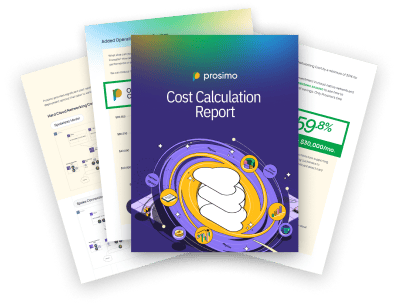Defining the difference between hybrid cloud and multi-cloud can be challenging, as these terms are often used interchangeably. However, despite their similarities, there is a key distinction.
In a multi-cloud setup, an enterprise leverages multiple public cloud services, typically from various providers. For instance, a company might run its web front-end application on one provider while hosting its email servers on another. Because cloud providers offer unique strengths, organizations adopt a multi-cloud strategy to access the best IT services, avoid vendor lock-in, and capitalize on cloud arbitrage by selecting providers based on price and specific service offerings.
Hybrid cloud computing, on the other hand, stands out due to its incorporation of private cloud infrastructure, such as an organization’s data center, alongside one or more public cloud services. These components work together to meet business objectives.
The main differences between hybrid and multi-cloud are:
- Hybrid clouds always include a private cloud and are typically managed as a single entity.
- Multi-clouds consist of multiple public cloud services, often performing different functions. They do not necessarily include a private cloud component but can, making them both multi-cloud and hybrid in some cases.
Many organizations stumble into a multi-cloud strategy unintentionally when different departments use various public cloud providers. Conversely, some organizations intentionally develop a strategy to utilize multiple public cloud providers as part of a comprehensive IT approach, integrating on-premises infrastructure, public cloud IaaS, and SaaS offerings into a well-managed hybrid IT environment.
For example, a hybrid cloud application might use on-premises databases while running application code in the private cloud and ‘bursting’ to the public cloud when demand exceeds in-house hardware capabilities.
As technology evolves, enterprises will continue to adopt multiple clouds to meet their business needs, whether they are cloud-native or migrate over time. According to industry analysts, anything other than a cloud-only strategy for new IT initiatives will need justification for over 30% of large enterprises. Additionally, they predict that by 2021, more than half of cloud-using enterprises will develop a cloud-first approach.
What Factors Should You Consider When Choosing A Cloud Strategy?
Public cloud providers each bring unique strengths and challenges, along with distinct pricing structures. Developing a robust cloud strategy requires a thorough evaluation of existing workloads, databases, networks, SLAs, and storage needs. Organizations should then align their current and future workload requirements with the services offered by various public cloud providers. As the range of available services continues to expand, it’s no surprise that enterprises are increasingly adopting multiple cloud providers to match each function with the provider that offers the best performance or pricing.
Multi-Cloud and Hybrid Considerations
When adopting a multi-cloud approach, it’s crucial to determine where other components of enterprise IT will reside. In a hybrid setup, database servers, authentication resources, and monitoring processes typically remain on-premises. In a non-hybrid multi-cloud scenario, these resources must be hosted somewhere, ensuring they can seamlessly access all enterprise-wide resources.
Building a Cloud Strategy: Gartner’s Six-Step Plan
- Cloud First and Multi-Cloud: Transitioning to a cloud-first approach requires the involvement of the entire organization. This holistic shift in business technology aims to define clear goals and outcomes. It’s important to recognize that not all applications are suitable for cloud migration; some may remain on-premises until they are fully refactored.
- Continuous Placement Assessment: Cloud provider offerings are constantly evolving. The optimal provider for a workload today might not be the best choice next month. Subscription pricing models offered by technology vendors can impact the OpEx/CapEx considerations that initially drove cloud adoption. Regular assessments are necessary to determine if workloads should migrate to a new provider or move to a private cloud to leverage better pricing.
- Future Planning: Cloud migration is an ongoing process. Developing skills, understanding provider differences, and creating process improvement plans based on cloud capabilities are continuous tasks. Plan for a multi-year migration effort with annual reassessments.
- Governance and Management: Effective cloud governance is complex, and managing a multi-cloud environment adds further challenges. With business units capable of independently initiating cloud services, tracking the entire IT footprint is essential. Organizations that can monitor cloud service consumption can manage their hybrid IT environment more effectively and ensure regulatory compliance.
- Tool Selection for Cloud Management: Each cloud provider offers unique management and deployment tools. Developing a tool strategy that spans multiple clouds can simplify management. Investing in a coordinated tool strategy can reduce the complexity of multi-cloud deployments and streamline IT staff training.
- Holistic Cloud Consideration, Including SaaS: Over time, on-premises applications or those hosted on IaaS or PaaS platforms may be replaced by more cost-effective SaaS solutions. Continuous evaluation of cloud computing requirements helps fine-tune the overall cloud strategy, determining whether to host workloads elsewhere or refactor older applications for cloud-native environments.
By considering these factors and regularly reassessing their cloud strategies, organizations can optimize their use of cloud services, ensuring they meet current and future business needs effectively.

Is It Possible For A Hybrid Cloud To Also Be Multi-Cloud?
Absolutely, hybrid and multi-cloud strategies are pivotal in modern IT solutions. A hybrid cloud integrates public and private cloud resources to create a unified IT environment. This setup typically leverages a common virtualization layer to streamline workload migration and facilitate the use of familiar tools across both cloud types. For instance, integrating a virtualization layer with on-premises infrastructure simplifies operations by ensuring consistency in tools and processes.
On the other hand, a multi-cloud approach involves using multiple cloud services from one or more providers. For example, an organization might use one provider for application workloads and another for enterprise databases. Unlike hybrid cloud, multi-cloud focuses on utilizing more than one public cloud service and doesn’t necessarily include a private cloud component, though it can.
Enterprises often adopt a multi-cloud strategy to avoid relying on a single provider, meet geographic or regulatory requirements, ensure business continuity, or leverage unique features offered by different providers. This diversified approach helps organizations enhance resilience and flexibility in their IT operations.
Understanding The Architectural Differences Between Hybrid Cloud And Multi-Cloud
The primary distinction between hybrid cloud and multi-cloud architectures lies in the location of non-cloud resources. Hybrid clouds integrate existing on-premises servers, storage, and networking to support additional services such as authentication, VDI, security, databases, and monitoring. In contrast, multi-cloud environments place these resources in the cloud, either with the same provider offering compute services or through another provider or colocation facility.
While it’s possible to consider every hybrid cloud as a type of multi-cloud by stretching the definition, not all multi-clouds are hybrid clouds. A hybrid cloud specifically combines both private and public clouds working together. In a multi-cloud setup, there’s no need to worry about on-premises private cloud infrastructure. Instead, the focus is on managing individual public cloud services and streamlining orchestration and monitoring between them. Admins should aim to use a single tool that operates across multiple clouds to minimize training, simplify operations, and reduce the risk of human errors.
Without a private cloud in the mix, multi-cloud strategies must address data storage compliance with regulations like PCI, HIPAA, or GDPR. Hyperscale cloud providers typically offer availability zones and regions to support these requirements. However, organizations must be diligent in ensuring that data backups or copies remain within designated regions to avoid compliance issues. Developing a robust data strategy is crucial for managing data effectively in a multi-cloud environment.
Conclusion
In conclusion, while hybrid cloud and multi-cloud are often used interchangeably, they have distinct architectural differences. Hybrid cloud integrates private and public cloud environments, including on-premises infrastructure, to meet business objectives. In contrast, multi-cloud involves using multiple public cloud services from different providers, offering flexibility and avoiding vendor lock-in. Organizations should carefully consider their workload requirements, data compliance needs, and tool selection to determine the most suitable cloud strategy. Regular reassessments and adjustments are essential to optimize the use of cloud services and meet evolving business needs effectively.
Frequently Asked Questions
- What’s the difference between multi-cloud and hybrid cloud?
- While these terms are often used interchangeably, they have distinct differences. Multi-cloud involves leveraging multiple public cloud services from various providers, while hybrid cloud incorporates private cloud infrastructure alongside public cloud services.
- Why would an organization choose a multi-cloud strategy?
- Organizations opt for a multi-cloud approach to access the best IT services, avoid vendor lock-in, and capitalize on cloud arbitrage by selecting providers based on price and specific service offerings.
- What are the main components of a hybrid cloud?
- A hybrid cloud always includes a private cloud and is typically managed as a single entity. It integrates private and public cloud environments, allowing them to work together to meet business objectives.
- How can organizations unintentionally adopt a multi-cloud strategy?
- Many organizations stumble into a multi-cloud strategy when different departments independently use various public cloud providers for their needs, without central coordination or strategy.
- What factors should organizations consider when choosing between multi-cloud and hybrid cloud?
- Organizations should evaluate their workload requirements, data compliance needs, and tool selection to determine the most suitable cloud strategy. Regular reassessments and adjustments are essential to optimize the use of cloud services and meet evolving business needs effectively.
